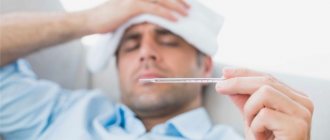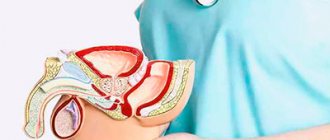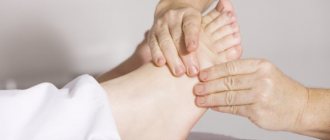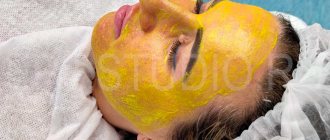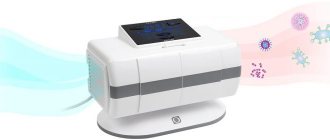October 25, 2020
These are completely different diseases and it is possible to distinguish them from each other, although not always easy. The addition of signs of eczema and infection to skin rashes makes diagnosis even more difficult.
People already suffering from one of these ailments know the difference between neurodermatitis and psoriasis and will not confuse their manifestations during exacerbation. When a skin lesion is first noticed, the following facts must be considered:
- after which rashes appeared on the skin;
- is there itching and peeling, how strong are they;
- in what places of the body did they appear: hands, neck, skin folds, head and others;
- the presence of such manifestations in relatives;
- combination of skin disease with allergic rhinitis, bronchial asthma, frequent urticaria.
A careful examination of the rash itself will provide a lot of information.
Psoriasis and neurodermatitis: common features
Sometimes these diseases can be confused by external factors:
- At an early stage, psoriasis appears as red nodules without peeling, which is similar to neurodermatitis.
- In both cases, the skin thickens, becomes drier and rougher.
- The elements are located on the hands, head and face, and in serious cases spread throughout the body.
- There may be a fusion of elements and inflammation due to an attached bacterial infection.
- In both cases the skin itches.
Similarities are observed during these illnesses: alternating exacerbations and remissions, when all manifestations completely disappear.
Non-drug methods for treating psoriasis at our clinic
Good to know
- Treatment of psoriasis on the head
- Treatment of psoriasis on the elbows
- Treatment of psoriasis on the legs
- Treatment of psoriasis on nails
- Treatment of psoriasis on the hands
- Treatment of palmoplantar psoriasis
Non-drug methods are of great importance in the treatment of psoriasis on the face. Depending on the patient’s condition, the stage of exacerbation, and his individual characteristics, various non-drug methods are used either as part of complex therapy or independently. These same techniques are actively used to prevent exacerbations.
- PRP therapy is an effective technique that involves injecting the patient’s own blood, enriched with platelets, into the inflammation on the face. The course of treatment helps to activate metabolism and suppress autoimmune processes. It is carried out as part of complex therapy for exacerbations, as well as as anti-relapse therapy.
- Autohemotherapy is a method that has been used for quite a long time to eliminate psoriatic rashes with good results. The patient's blood taken from a vein is injected intramuscularly. There is a kind of shaking of the body; it copes with the disease with renewed vigor.
- Reflexology is an ancient Chinese method of treating all diseases, which is recognized by modern medicine. The method is based on a reflex effect on certain points on the body associated with various organs. You can influence the points in different ways: with needles, massage, cauterization. An experienced professional trained in China can treat a psoriasis flare-up without the use of medications.
- Vacuum therapy is a type of reflexology. Reflex points on the body are exposed to rarefied air. An effective technique in the hands of an experienced specialist.
- Herbal medicine is the use of medicinal plants for the treatment of psoriasis on the face. This allows you to reduce the drug load. It relieves inflammation and itching well, and prevents the development of infectious complications.
How facial psoriasis is treated at the Paramita Clinic
To avoid relapses, it is necessary to eliminate the cause of the disease.
Read more about our unique method of treating psoriasis
A special feature of prescribing therapeutic measures is an individual approach to each patient. This allows you to cope with any, even complex cases of psoriatic rashes on the face. The clinic’s doctors are well aware that psoriasis on the face causes not only physical, but also mental suffering, so they try to eliminate the rash as quickly as possible.
Psoriasis is a chronic disease that cannot be cured. But modern medicine has methods that make it possible to maintain this disease in a state of remission. For those who have psoriatic plaques located on the face, it is very important to choose a professional psoriasis treatment center and constantly carry out supportive treatment under the supervision of a doctor.
Sign up for a free initial appointment
Neurodermatitis and psoriasis are different
Let's consider manifestations that are characteristic only of one of these pathologies and are not found in the other.
Specific for psoriasis:
Clearly visible in uncomplicated cases:
- there is no obvious connection with allergies;
- the outer surfaces of the arms and legs are more often affected;
- nodules appear in places that come into contact with clothing, jewelry, bag straps, and may appear on scratches and abrasions;
- the psoriatic plaque is homogeneous, red, higher than the surrounding skin, exfoliates excessively, has clear contours and a border;
- if you scratch the plaque, you can see that the scales are plastic like stearin;
- the skin under the scales is covered with a red shiny film, which is easily damaged, and droplets of blood appear (blood dew);
- In addition to the skin, nails are affected, joints, kidneys, liver, and intestines are affected.
The disease is incurable, but treatment can produce stable and long-term remissions.
Specific for neurodermatitis
Low blood pressure, low blood sugar and special symptoms are often combined:
- there is always a connection with an allergen (food, dust, chemicals, animal hair);
- areas of the skin that sweat more are affected - in the folds, on the inner surfaces of the arms and legs, on the neck, around the genitals;
- spots on the skin are heterogeneous, as if they consist of small parts, redness and peeling are small, there are often blisters;
- itching of the skin is unbearable;
- joints and internal organs are not affected, but concomitant allergic diseases and bronchial asthma are often detected.
The disease can last a long time, but is usually completely cured. In children and adolescents, neurodermatitis often goes away on its own as the child matures and hormonal levels change.
Etiology of the disease
This disorder is characterized by hyperproliferation of epidermal keratinocytes with a shortened life cycle of epidermal cells. The exact causes of psoriasis are unknown. Presumably, environmental, genetic and immunological factors play a role in the pathological process.
Environmental factors
Triggers for exacerbation of the skin disease psoriasis can be many factors, including exposure to cold, trauma, the use of certain medications (for example, iodides, acetylsalicylic acid, lithium, beta blockers), withdrawal of corticosteroids, infectious processes, including streptococcal and staphylococcal .
In addition, the role of sunlight, elevated air temperature, and pregnancy has been identified in the manifestation of psoriasis. Stress can also aggravate psoriasis. Thus, some authors suggest that psoriasis is closely related to stress disorders, which, in their opinion, is evidenced by increased concentrations of neurotransmitters in psoriatic plaques [2]. In some cases, psoriasis flares up for an unknown reason that cannot be explained by traditional psoriatic triggers.
Genetic factors
Undoubtedly, a hereditary factor plays an important role in the development of psoriasis, in particular, the presence of certain chromosomal loci in the HLA (Human Leukocytes Antigens) system [3]. Genomic analysis made it possible to differentiate 9 different gene loci, which were called “psoriasis susceptibility genes” (PSORS, psoriasis susceptibility genes). They were numbered from 1 to 9: PSORS-1, PSORS-2, etc.
The main gene that determines the hereditary tendency to develop psoriasis is considered to be PSORS-1, located on chromosome 6. Three genes in the PSORS-1 locus are associated with the development of psoriasis, and one of the most common is the allelic variant of the human leukocyte antigen HLA-Cw6. With this allele, there is often a family history of psoriatic disease, early onset of the disease, and psoriatic arthritis.
Another factor associated with psoriasis is obesity, in the development of which hereditary predisposition also plays a role. It is well established that with an increase in body weight, the course of psoriasis worsens, and with a decrease, remission occurs.
Immunological factors
Psoriasis is an autoimmune disease. The pathology is directly related to excessive T-cell activity. Studies also show increased levels of the pro-inflammatory cytokine tumor necrosis factor TNF-alpha in psoriasis patients.
Patchy psoriasis (the most common form) often develops after certain immunologically significant events, such as streptococcal pharyngitis, withdrawal of steroid therapy, and use of antimalarial drugs.
Why are neurodermatitis and psoriasis the same thing?
Both diseases are not contagious and there is no danger to people in contact. The severity of both diseases always depends on the psychological situation. Stress, resentment, feelings of loneliness and unfulfillment in life serve as an impetus for exacerbation and progression of the disease, and slow down recovery. Another common feature is that climatic therapy with the sun and sea, physiotherapy, acupuncture, and psychotherapy help very well.
For both pathologies: when a person undergoes treatment under the guidance of an experienced dermatologist and takes the treatment prescribed in the clinic, it is possible to cope with the disease without the use of hormones.
There are proprietary non-hormonal methods that can be completed at the Moscow PsorMak Dermatological Center. Sign up for a consultation by phone or online and start moving towards health. October 25, 2020
Author of the article: dermatologist Mak Vladimir Fedorovich
Photo of psoriasis on the face, what psoriasis looks like on the face
Photo 1. Psoriasis on the face.
Photo 2. Psoriasis of the scalp.
Photo 3. Seborrheic psoriasis of the face.
Photo 4. Psoriasis on the skin of the face.
Psoriasis on the face in the initial stage may resemble simple dermatitis; for comparison, just look at the photo on a medical website. In order to get acquainted with what classic psoriasis looks like on the face, it is recommended to familiarize yourself with the photo.
Causes
The exact cause of the disease is still not known. Currently, scientists identify several theories about the causes of psoriasis2. These include:
- genetic predisposition;
- metabolic disorders;
- immunity disorders;
- focal chronic infection.
The development of the disease is based on several interrelated factors. Often, even in people with a genetic predisposition to psoriasis, it may not make itself felt for many years. The impetus for the development of the disease can be:
- severe or prolonged stress
- alcohol;
- hormonal disorders;
- metabolic disorders;
- taking certain medications;
- infections;
- skin damage (burns, cuts, injuries);
- other factors.
When reacting to negative factors, foci of inflammation form in the skin, and the processes of cell division and maturation are disrupted. Cells begin to actively divide, the skin in places of inflammation thickens, forming papules (nodules) of bright pink color, which merge into so-called psoriatic plaques, covered with scales. In the absence of treatment, a significant surface of the skin is gradually affected, and inflammation spreads to the nails and joints.
In fact, the results of the effects of all causes of psoriasis can be combined into two groups: impaired division of skin cells and changes in the functioning of the immune system.
All external factors (ecology, stress, trauma) only aggravate the course of the disease, but cannot act as a single cause.
Stages of the disease
The disease occurs in three stages, replacing one another. These are progressive, stationary and regressive stages. Sometimes the disease occurs during the development of several stages simultaneously.
Common psoriasis: Progressive stage
The progressive stage of widespread vulgar psoriasis in the medical history is characterized by the appearance of bright pink rashes. New spots appear on the body, and old ones may increase in size. The border of the papules does not peel off and has a brighter color than the main surface of the lesion. The inflammations are very itchy: scratching leads to new rashes.
Common psoriasis: Stationary stage
At this stage, the progress of the disease stops, and psoriasis continues its gradual development: the spots increase slightly and merge with each other, become flat and stop peeling. New rashes do not appear at the stationary stage.
Common psoriasis: Regressive stage
The plaques turn pale and gradually dissolve: most often they disappear from the center to the borders, taking on the shape of a ring. Sometimes the disappearance occurs, on the contrary, from the borders to the middle. White spots form at the site of former rashes.
Is psoriasis contagious?
The external manifestations of the disease in this case are deceptive; doctors know for sure that psoriasis is not contagious, it is not transmitted from person to person either by airborne droplets, or by household or sexual contact.
That is, even if you hug a person with psoriasis or touch the plaques with your hands, it is impossible to become infected. If someone who has been in contact with the patient ever develops psoriasis, then this will be an independent event.
Psoriasis is not transmitted through clothing; it is impossible to become infected with it in a store fitting room. There is also no household route of transmission. If you meet a person who has manifestations of psoriasis in the pool, in the bathhouse, not on the beach, in the gym, rest assured, there is no danger of infection in this case.
Prevention of psoriasis on the face
Preventive measures are aimed at preventing the development of the disease or the transition of psoriasis from remission to the acute stage. They imply adherence to a daily routine and rest, proper and balanced nutrition, giving up bad habits, and eliminating stress factors.
Basic criteria for caring for delicate facial skin:
- wash only with special moisturizers;
- water at a comfortable temperature (30-36°C);
- soak the remaining moisture with a soft towel;
- the use of creams that protect against cold and ultraviolet rays;
- wearing clothes (outerwear with a hood, scarf) and accessories according to the season (use an umbrella in rain and wind);
- Men are recommended to use an electric razor.
Compliance with preventive measures and timely therapy prescribed by a specialist will reduce the risk of spread and relapse of the disease.
What factors provoke psoriasis?
The trigger is many reasons: autoimmune diseases, recurrent chronic diseases that affect decreased immunity. But no one can name the exact reasons.
Medicine identifies the following factors:
- hereditary predisposition. They assume it's a matter of genes. If the mother had the disease, there is a high probability of it occurring in the child;
- presence of chronic diseases. These include stomach and intestinal problems, as well as endocrine pathology;
- psychosomatics: experienced stressful situations and a nervous breakdown can trigger the appearance of psoriasis.
Prevention: how to reduce the risk of relapse
Unfortunately, medicine currently does not know how to completely cure psoriasis. Therapy removes external manifestations and discomfort. But the risk of relapse is high. The situation is similar to oncology. Hereditary predisposition influences. But some people develop psoriasis, and some don’t. To reduce the frequency of manifestations, try to lead a healthy lifestyle: eat well, get enough sleep, and take care of your health. It would not be a bad idea to visit a dentist, endocrinologist, gastroenterologist or ENT specialist if there are problems with them. Carious cavities, inflammation of the tonsils and a large stomach can become provoking factors for a relapse. The longer the period spent in remission, the more effectively the body recovers and the lower the load on the immune system.
